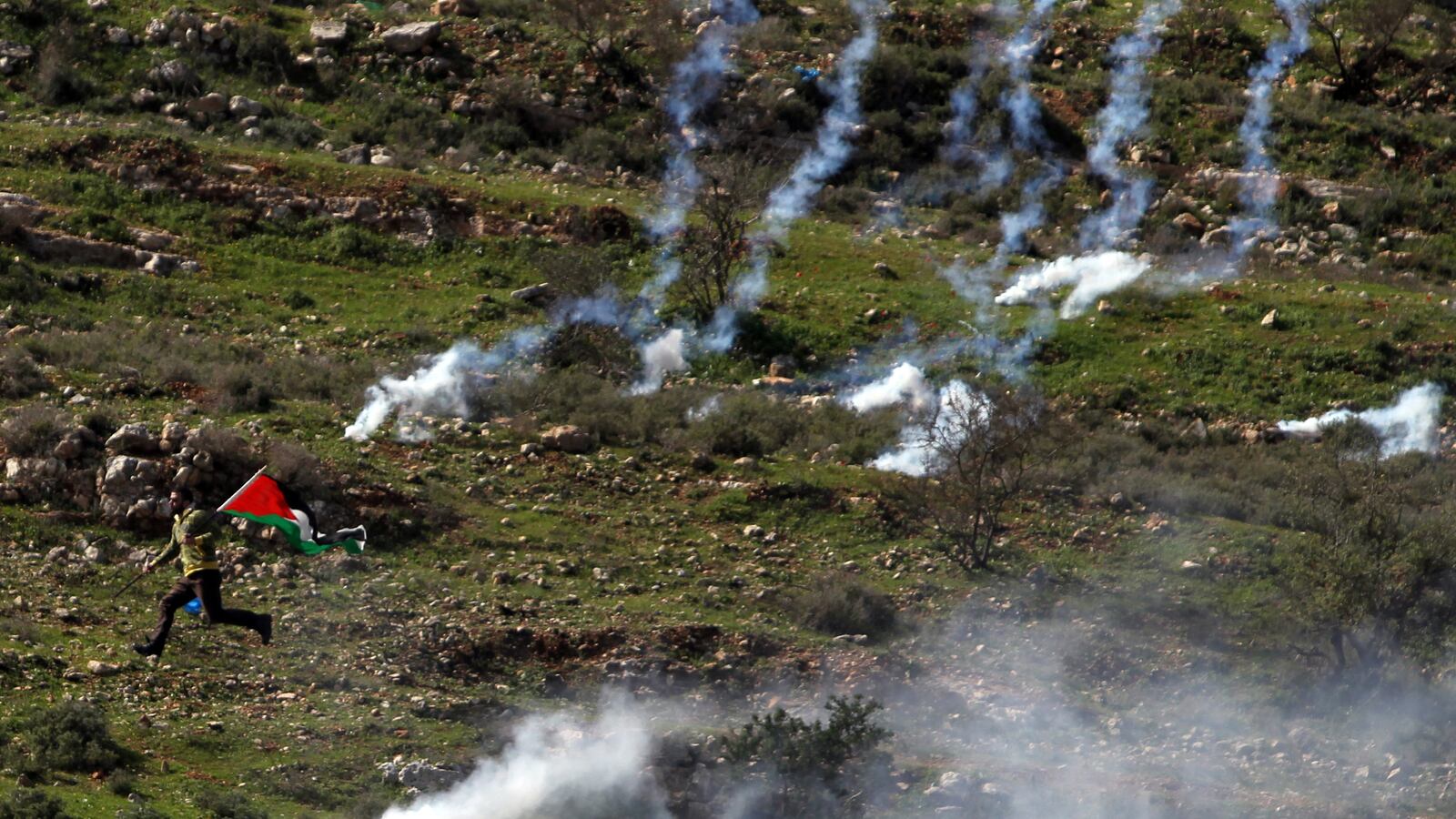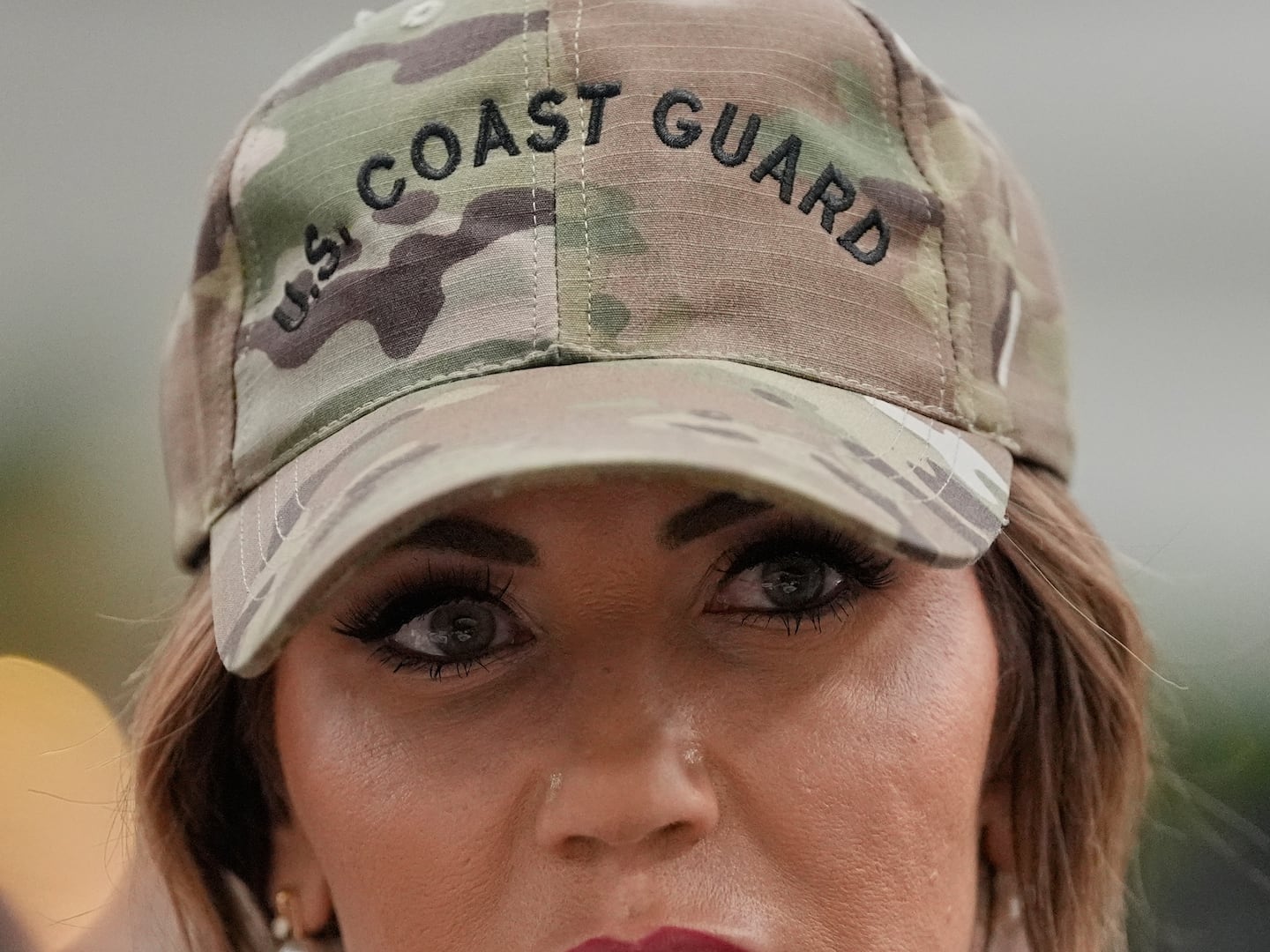On Friday afternoon, Sarit Michaeli, spokesperson for Israeli human rights NGO B’tselem, was hit in the leg with a rubber-coated bullet fired at close range by a member of Israel’s Border Police (technically an arm of Israel’s police force, the Border Police function as an arm of Israel’s military and are understood as such by the Palestinians they patrol).
Michaeli, a Jewish Israeli, was shot while filming in the village of Nabi Saleh, where residents regularly stage demonstrations to protest the seizure of their water spring and other village property by settlers. As B’tselem reported this past January:

From the outset, the demonstrations at Nabi Saleh have taken the form of nonviolent processions, setting out from the village center and proceeding to the spring in order to protest the unlawful takeover of village lands. The early demonstrations reached the main road that separates the village from the spring and the settlement, and there they were dispersed by the Israeli security forces.
After several demonstrations, the security forces prevented the procession from leaving the village.
When the Border Police broke up the protests in the past, village youth would sometimes respond by throwing stones, and security forces would respond in turn with an escalating variety of non-lethal and lethal weapons—but as the case of Mustafa a-Tamimi shows: Tear gas, for instance, might not be lethal, but when a tear gas canister is shot-point blank at a person’s head, it becomes very lethal, indeed. (A-Tamimi is far from the only demonstrator at whom canisters have been shot directly, as this video and this video demonstrate. The videos also demonstrate that the violence often begins on the Israeli side; the violence in the latter video likewise resulted in the death of a demonstrator).
The rock throwing has largely stopped, though, and a kind of pas de deux has developed in which a few dozen unarmed villagers march toward the main road to demand the return of their lands and are met and blocked by armed Israeli security forces, who then give chase.
Last Friday, as the work of a different videographer demonstrates, the villagers had set three tires on fire, past which ten or so Border Police marched, opening fire as they did. The Israeli forces then regrouped and ran directly at the demonstrators (who were, it might be remembered, in their own village), discharging weapons. As the video makes clear, the Israelis weren’t in danger at the time and indeed, at that point, numbered hardly less than the actual demonstrators still on the scene.
As a result of this action, Michaeli was hit—and as her video shows, Border Police continued to discharge their weapons in her direction even when she was already on the ground and receiving treatment.
It’s worth looking at a picture of her leg immediately post-injury, and at a picture of the bullet after it was removed, and considering what might have happened if Michaeli had been hit in the head or chest. It’s also worth noting that Sarit Michaeli was armed with nothing but a rather visible camera when she was fired upon.
As B’tselem notes in its statement regarding the incident:
The shooting contravenes military directives. The bullet was fired from a distance of fewer than 20 meters, considerably nearer than the stipulated 50-meter minimum. Moreover the person shot was a photographer who posed no threat to security personnel.
Perhaps the most important thing to note, however, is what Michaeli was doing there in the first place: Documenting the very behavior to which she herself fell victim.
A protest was held at Nabi Saleh last Tuesday as well, but that time, live fire was used. An Israeli spokesman reports that about 100 Palestinians were involved in a “violent and illegal riot,” throwing stones and rolling burning tires toward security forces:
One soldier was injured during the riot, and soldiers sensing imminent danger to their lives fired towards a main instigator, registering a direct hit.
For their part, Palestinians called the events “confrontations,” and reported the following:
Mahmoud Tamimi, 22 years old, was shot with a live ammunition bullet in the leg when he was trying to help Mohammad Tamimi, 10 years old, who had been shot with a rubber coated steel bullet in the leg while standing on the hill side where the confrontations were taking place.
It’s also been reported that a journalist documenting the clashes was attacked by security forces, and his camera broken.
Pictures can be seen here of the aftermath of the direct hit on Mahmoud Tamimi—in one, a group of Palestinians carries him away, as a member of the security forces stands to the side. In another, a group of uniformed Israelis surrounds the injured man, and one of the soldiers, rifle across his back, appears to be shoving one of the Palestinians.
Is this a violent riot which posed a threat to life and limb? It’s possible that the pictures we’re not seeing tell a different story, but the photographic evidence available suggests a reality that was, at the very least, not quite what the Israeli spokesman described. Moreover, when protestors who offer no threat whatsoever are rushed at with rubber bullets, it’s hard to take at face-value the explanations for the use of live fire.
Or it is for me, at any rate. As Sarit Michaeli could tell you: B’tselem isn’t out there documenting tea parties. They’re out there documenting regular, consistent, and deeply troubling violations of human rights law by Israel’s security forces, frequently contrary to the military’s own statements and/or regulations.
And the sad truth is that if an Israeli or a Jew isn’t there to report back, we pretty much never pay attention. Even then, we might not.






